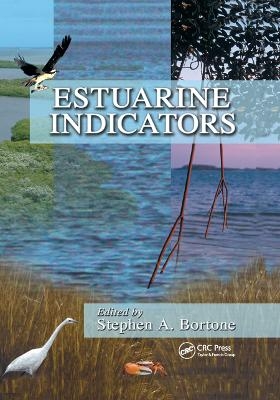
Estuarine Indicators
CRC Press (Verlag)
978-0-367-39342-7 (ISBN)
Derived from this conference of leading estuarine scientists, Estuarine Indicators presents the principles, concepts, practical use, and application of indicators in estuarine research and management practices. Topics include: the theory behind environmental indicators and their presumed attributes; the methods and protocols of indicator development and evaluation; a presentation of effective and ineffective indicator examples; and discussions of the future directions in research and management practices.
This is an ideal reference for researchers, scientists, and students from any field dealing with estuaries and estuarine ecosystems. Its introductory-level chapters are accessible to novices and seasoned experts alike, and the applications and interpretation of research data suit the needs of environmental managers. This is a truly multidisciplinary, comprehensive compendium upon which future research will undoubtedly be built.
Stephen A. Bortone
The Quest for the "Perfect" Estuarine Indicator: An Introduction. Using Multiple Response Bioindicators to Assess the Health of Estuarine Ecosystems: An Operational Framework. Physical Processes Affecting Estuarine Health. Using Statistical Models to Simulate Salinity Variability in Estuaries. Using Satellite Imagery and Environmental Monitoring to Interpret Oceanographic Influences on Estuarine and Coastal Waters. Development and Use of Assessment Techniques for Coastal Sediments. Sediment Habitat Assessment for Targeted Near-Coastal Areas. Bacterial Communities as Indicators of Estuarine and Sediment Conditions. Microbial Biofilms as Integrative Sensors of Environmental Quality. Diatom Indicators of Ecosystem Change in Subtropical Coastal Wetlands. Using Microalgal Indicators to Assess Human- and Climate-Induced Ecological Change in Estuaries. A Hierarchical Approach to the Evaluation of Variability in Ecoindicators of the Seagrass Thalassia Testudinum. Evaluating Indicators of Seagrass Stress to Light. Significance of Considering Multiple Environmental Variables When Using Habitat as an Indicator of Estuarine Condition. Using Seagrass Coverage as an Indicator of Ecosystem Condition. Mangroves as an Indicator of Estuarine Conditions in Restoration Areas. Molecular and Organismal Indicators of Chronic and Intermittent Hypoxia in Marine Crustacea. Spionid Polychaetes as Environmental Indicators: An Example from Tampa Bay, Florida. Trematode Parasites as Estuarine Indicators: Opportunities, Applications, and Comparisons with Conventional Community Approaches. Macrobenthic Process-Indicators of Estuarine Condition. Using Macroinvertebrates to Document the Effects of a Storm Water-Induced Nutrient Gradient on a Subtropical Estuary. Nekton Species Composition as a Biological Indicator of Altered Freshwater Inflow into Estuaries. Evaluating Nearshore Communities as Indicators of Ecosystem Health. Fishes as Estuarine Indicators . Habitat Affinities of Juvenile Goliath Gro
| Erscheinungsdatum | 02.09.2019 |
|---|---|
| Verlagsort | London |
| Sprache | englisch |
| Maße | 178 x 254 mm |
| Gewicht | 1338 g |
| Themenwelt | Naturwissenschaften ► Biologie ► Limnologie / Meeresbiologie |
| Weitere Fachgebiete ► Land- / Forstwirtschaft / Fischerei | |
| ISBN-10 | 0-367-39342-5 / 0367393425 |
| ISBN-13 | 978-0-367-39342-7 / 9780367393427 |
| Zustand | Neuware |
| Haben Sie eine Frage zum Produkt? |
aus dem Bereich


